Disclosure: This article contains affiliate links. We may earn a commission from purchases at no extra cost to you, which helps our travel content.
I've spent decades watching neighborhoods transform—first in Buffalo, now globally. There's something about Baguio City that reminds me of my hometown's artistic revival, but with a crucial difference: here, the renaissance is deeply rooted in indigenous traditions that stretch back centuries. At 5,000 feet above sea level, this Philippine mountain city offers a refreshing break from Southeast Asia's typical heat, both climatically and culturally. The Cordillera region's six major ethnolinguistic groups—Ibaloi, Kankanaey, Ifugao, Kalinga, Apayao, and Bontoc—have maintained their artistic traditions despite centuries of colonization. What started as my research into urban development patterns quickly evolved into a fascination with how Baguio has preserved and promoted its indigenous art forms while building a sustainable creative economy. You don't need deep pockets or mountaineering skills to explore this aspect of Baguio—just comfortable shoes and curiosity.
Tam-awan Village: Living Museum of Cordilleran Culture
Tam-awan means 'vantage point' in the local Ibaloi language—an apt name for a place offering clear views into Cordilleran cultural heritage. This artist-initiated village isn't some sanitized tourist trap but a working cultural complex where traditional architecture serves as both exhibit and workspace.
The village features seven traditional Ifugao huts and two Kalinga houses, all dismantled from their original mountain locations and meticulously reconstructed here. I've seen plenty of cultural villages globally, but what sets Tam-awan apart is its function as a living workspace. Artists don't just demonstrate techniques for tourists—they're actively creating, teaching, and preserving cultural knowledge.
During my visit, I watched a master weaver working on a traditional backstrap loom, creating patterns that tell stories of mountain life. The intricate symbols—representing rice terraces, human figures, and celestial bodies—haven't changed in centuries. What has changed is how these textiles find their way to global markets.
'These designs have specific meanings,' explained my guide, pointing to a zigzag pattern. 'This represents the rice terraces—our connection to the land.'
The entrance fee is just 120 pesos (about $2.15), making it accessible for budget travelers. I spent three hours here and could have stayed longer.
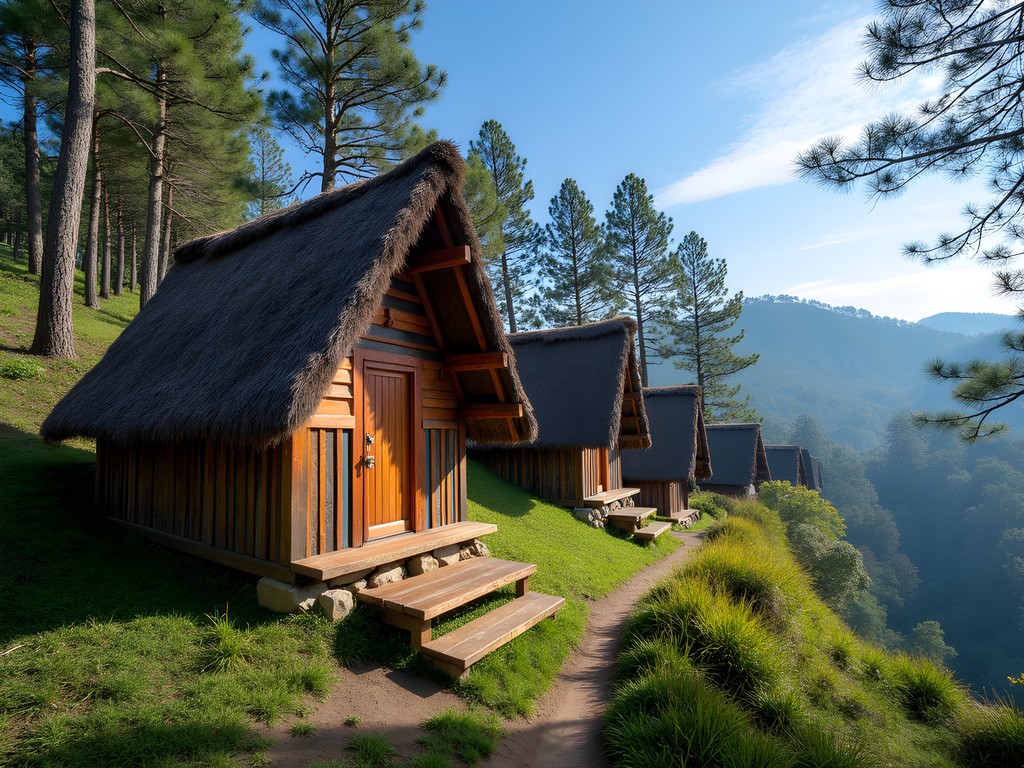
💡 Pro Tips
- Visit on weekdays before 10am to avoid tour groups
- Ask permission before photographing artists at work
- Bring small bills for purchasing artwork directly from creators
BenCab Museum: Where Traditional Meets Contemporary
Just a 15-minute taxi ride from the city center (about 150 pesos), the BenCab Museum represents the perfect marriage of indigenous inspiration and contemporary execution. National Artist Benedicto Cabrera—BenCab to locals—has created a four-level museum that houses not just his own work but an impressive collection of indigenous Cordilleran artifacts.
The Cordillera Gallery on the third floor houses one of the most comprehensive collections of indigenous artifacts I've seen outside major anthropological museums. Bulul rice guardian figures, ceremonial boxes, weapons, and textiles are displayed with detailed context—not as curiosities but as living cultural expressions.
'I started collecting these pieces in the 1970s,' BenCab told me during a fortuitous encounter in the museum café. 'Not as an anthropologist but as an artist inspired by their forms and meanings.'
What struck me most was how the indigenous collections directly inform BenCab's contemporary paintings. His famous 'Larawan' series clearly draws from traditional Cordilleran aesthetics while addressing modern Filipino identity.
For photographers, the museum offers exceptional lighting conditions. My travel camera captured the subtle textures of wood carvings beautifully, though flash photography is prohibited.
The 150-peso entrance fee ($2.70) is a bargain considering the museum's scope. Budget at least two hours here, and don't miss the Café Sabel downstairs, where farm-to-table dishes use ingredients grown on the museum grounds.

💡 Pro Tips
- Visit on weekdays to avoid crowds
- Take the garden trail after viewing the galleries
- Check the website for special exhibitions that often feature indigenous artists
Easter Weaving Room: Hands-On Textile Traditions
In my decades developing commercial spaces, I've seen countless artisan workshops converted into sterile retail experiences. The Easter Weaving Room, founded in 1909 by American missionary Alice McKay Kelly, has managed to avoid this fate. Located in a modest building along Easter Road, it remains both a working weaving center and retail outlet where you can watch artisans create textiles using traditional techniques.
What makes this place special isn't just the preservation of technique but the economic model. Women weavers from various Cordilleran tribes work here, earning fair wages while passing skills to younger generations. It's exactly the kind of sustainable cultural preservation model I've researched in post-industrial cities across Eastern Europe.
'My grandmother taught me, and now I'm teaching my daughter,' explained Lorna, a master weaver from the Ifugao tribe, as her hands moved deftly across the loom. 'These patterns tell our stories.'
The back-strap looms they use are essentially the same design used for centuries—portable frames that attach to the weaver's body, creating tension through their own weight. The resulting textiles feature geometric patterns in vibrant colors derived from natural dyes.
For those interested in sustainable souvenirs, this is the place. Prices are reasonable—small table runners start around 300 pesos ($5.40), while larger pieces range from 1,000-3,000 pesos ($18-54). All proceeds support the weavers directly.
I bought a small wall hanging that now adorns my Hamburg apartment—a daily reminder of the resilience of indigenous crafts in a globalized world. If you're traveling with limited luggage space like I was, consider packing a packing cube set to organize and compress your textile purchases without wrinkling them.
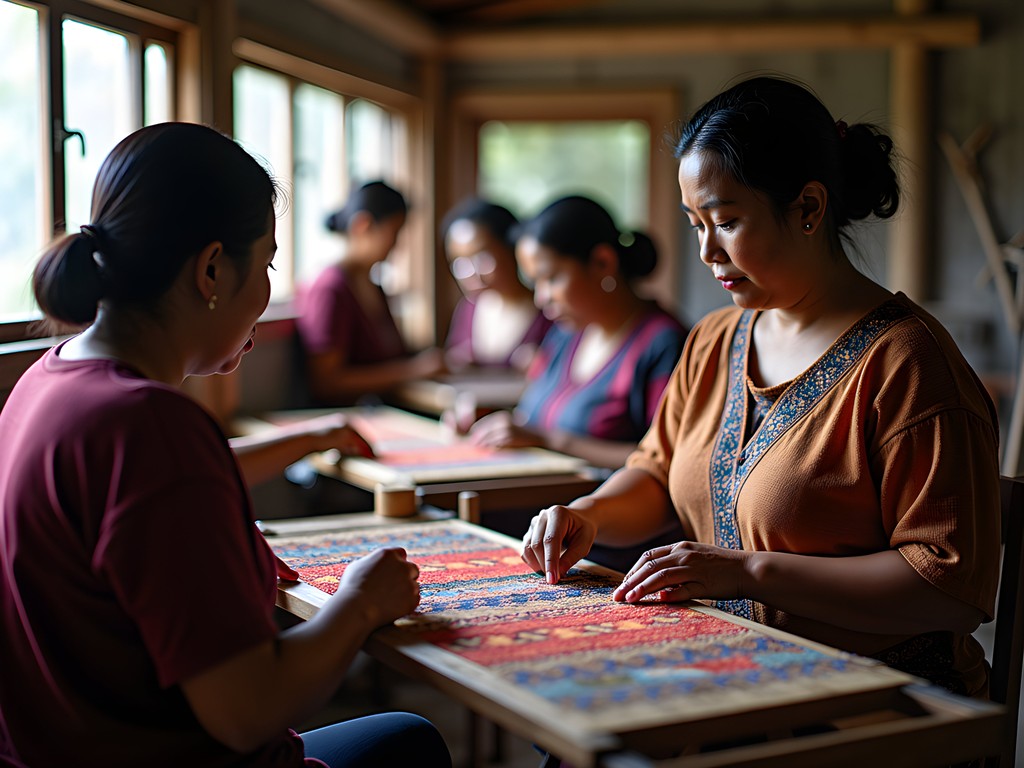
💡 Pro Tips
- Visit between 9-11am when most weavers are actively working
- Ask for demonstrations—most weavers are happy to explain their techniques
- Bring cash as credit card facilities can be unreliable
Ili-likha Artists Village: Creative Adaptive Reuse
As someone who's spent a career in real estate development, I'm always looking for innovative adaptive reuse projects. Ili-likha Artists Village, created by filmmaker Kidlat Tahimik (born Eric de Guia), represents one of the most creative examples I've encountered.
Tucked away in the heart of downtown Baguio, this former dilapidated building has been transformed into a warren of art spaces, performance venues, and small eateries. What makes it remarkable is how the renovation preserved the building's deterioration while making it functional—tree roots grow through floors, moss covers walls, and recycled materials form new structures within the old.
'We didn't want to erase the building's history,' explained one of the resident artists. 'The decay is part of its story.'
This philosophy extends to the village's approach to indigenous culture—not as something frozen in time but as a living, evolving tradition. The name 'Ili-likha' combines the Ilocano word for village ('ili') with the Tagalog word for creation ('likha')—a linguistic hybrid reflecting the project's blended approach.
The food stalls here serve traditional Cordilleran dishes with contemporary twists. I tried pinikpikan (traditional chicken soup) at Café Cueva and etag (salt-cured pork) pasta at another stall—both delicious examples of culinary innovation rooted in indigenous traditions.
For documenting these unique spaces, I relied on my travel tripod to capture the challenging low-light conditions without flash. The compact size made it easy to carry through the village's narrow passages.
Entrance is free, making it perfect for budget travelers. Plan to spend at least an hour exploring the various nooks and crannies, longer if you stop for a meal.
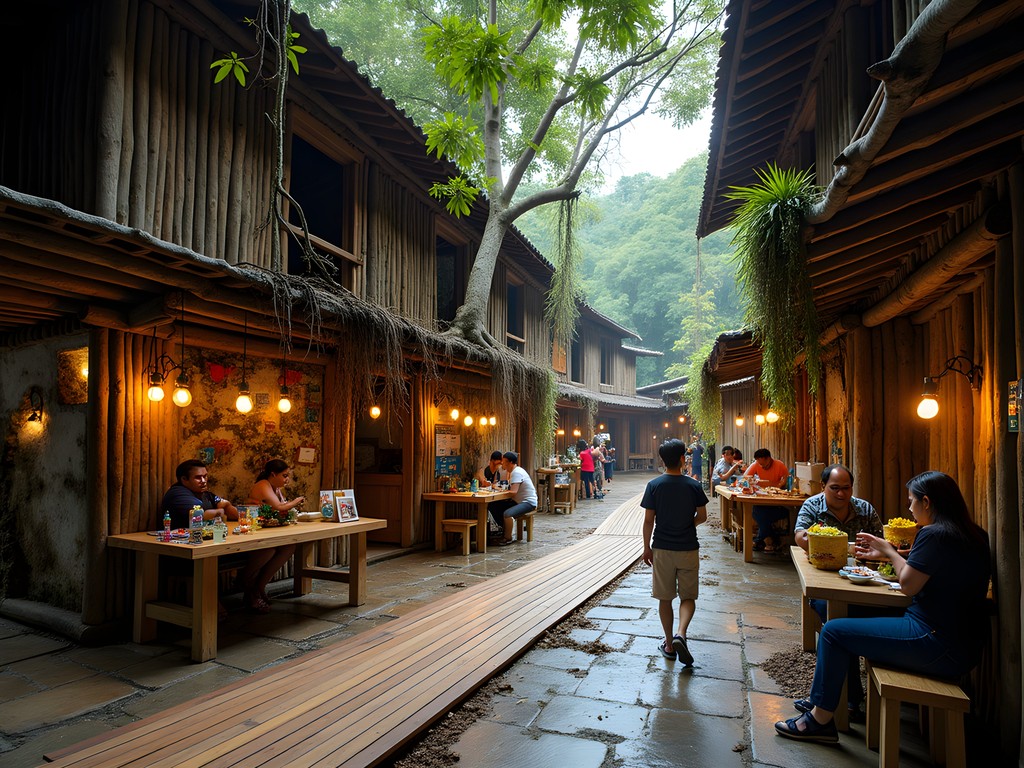
💡 Pro Tips
- Look up—some of the most interesting installations are overhead
- Try at least one indigenous-inspired dish from the food stalls
- Visit during weekday afternoons when local artists often work in the space
Migyeon's Woodcarving Workshop: Learning from Masters
The most authentic cultural experiences often happen away from established tourist circuits. In Baguio's Asin Road area, about 30 minutes from the city center, I discovered a cluster of woodcarving workshops where Ifugao masters create everything from traditional bulul figures to contemporary sculptures.
Migyeon's workshop—named after the master carver who established it three generations ago—offers something special: hands-on lessons for visitors. For 500 pesos ($9), you can spend two hours learning basic carving techniques and create a small souvenir to take home.
'We don't just want to sell our art,' explained Jordan, the current workshop leader and Migyeon's grandson. 'We want people to understand the process—the patience and skill required.'
The workshop uses traditional hand tools alongside modern equipment. What hasn't changed is the deep connection to the pine forests that provide their materials. The carvers maintain a sustainable harvesting system, using only fallen trees or those marked for removal.
I've tried many tourist 'workshops' globally that offer little more than performative demonstrations. This was different—genuinely educational and challenging. My small carved pine cone paperweight won't win any awards, but it gave me profound respect for the masters who can transform a block of wood into intricate narrative scenes.
Getting here requires either a taxi (about 200 pesos one-way) or a jeepney to Asin Road (25 pesos) followed by a short walk. Call ahead to schedule a workshop session, as they sometimes close for large commissions or cultural events.
For those serious about documenting their experience, I recommend bringing a travel notebook to sketch designs before carving and take notes on techniques. The craftsmen appreciate visitors who show genuine interest in learning.

💡 Pro Tips
- Wear clothes that can get dusty from wood shavings
- Bring water—the workshops can get warm during midday
- Ask about the symbolism behind traditional carving motifs
Final Thoughts
Baguio's indigenous art scene offers something increasingly rare in our globalized world—authentic cultural expression that's neither calcified in the past nor divorced from its roots. What struck me most was how these traditions remain economically viable, providing sustainable livelihoods while preserving cultural knowledge. As someone who's witnessed Buffalo's painful industrial decline and subsequent arts-driven revival, I see valuable lessons in Baguio's approach to cultural preservation through economic opportunity. You don't need specialized knowledge or deep pockets to appreciate this aspect of Baguio—just a willingness to look beyond the standard tourist attractions. Whether you're examining centuries-old weaving patterns or watching young artists reinterpret traditional motifs, you're witnessing a conversation between past and present that remains vibrantly alive in the cool mountain air of the Philippines' City of Pines.
✨ Key Takeaways
- Indigenous art in Baguio is a living tradition, not a museum piece
- Budget travelers can access authentic cultural experiences for under $50 total
- The best experiences combine traditional techniques with contemporary applications
- Direct purchases from artisans support sustainable cultural preservation
📋 Practical Information
Best Time to Visit
October-November (after rainy season, before holiday crowds)
Budget Estimate
$150-200 for a weekend (including accommodations, food, and activities)
Recommended Duration
2-3 days
Difficulty Level
Easy
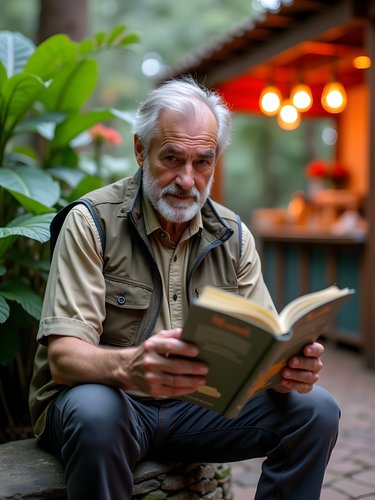

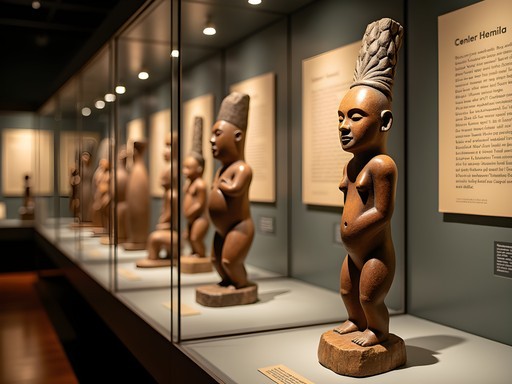
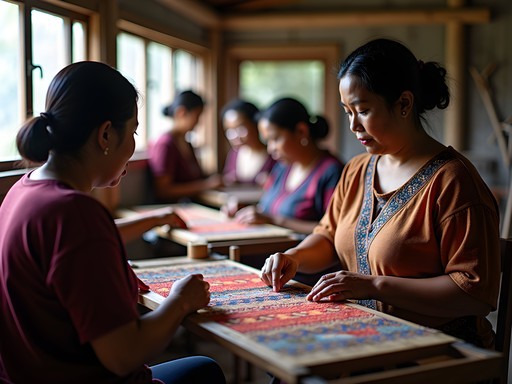
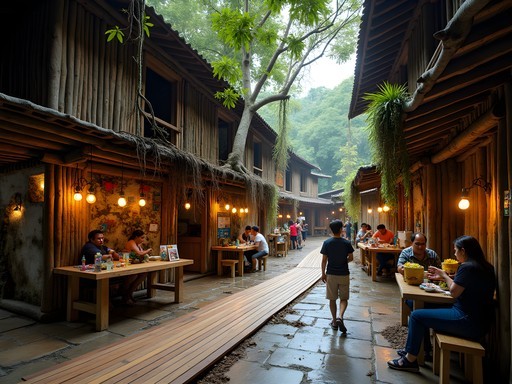



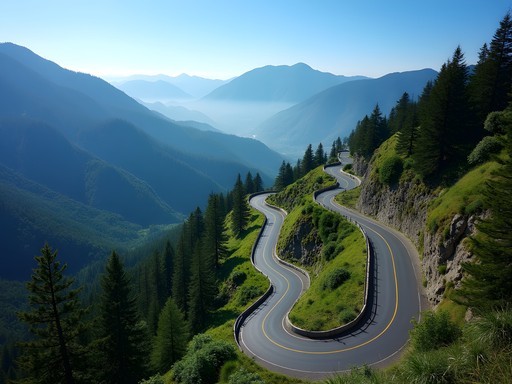





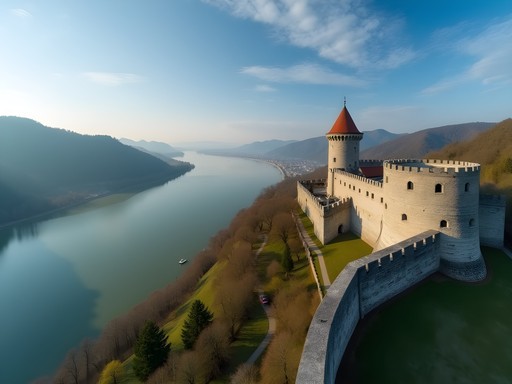
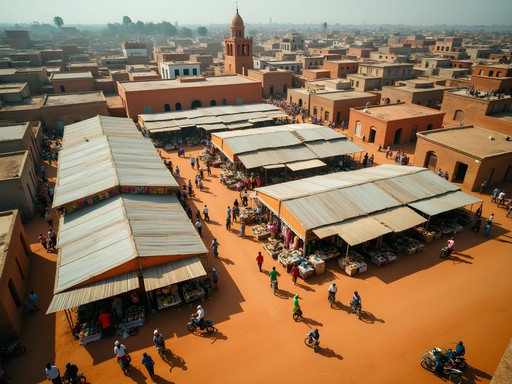
Comments
springwalker
If you're visiting Baguio, try to go during weekdays. The art spots get really crowded on weekends with visitors from Manila!
nomadnomad
Great post! I'm curious about the weaving traditions - are there specific patterns or symbols that are unique to the Cordillera region? And is it possible to purchase authentic textiles directly from the weavers at Easter Weaving Room? Would love to support the artisans directly rather than buying mass-produced souvenirs.
springwalker
Yes! I bought a beautiful table runner directly from a weaver at Easter Weaving Room. They explain all the traditional patterns and what they symbolize. Much more meaningful than generic souvenirs.
Douglas Bradley
Mark, excellent analysis of how Baguio balances preservation with evolution in its indigenous art scene. I spent three weeks in the Cordillera region last year researching traditional tattoo practices, and Baguio served as my cultural orientation before heading into more remote areas. What struck me was how the city functions as a bridge between traditional village practices and contemporary expression. The Easter Weaving Room was particularly enlightening - watching master weavers incorporate traditional symbols while adapting to modern market demands. I documented the process extensively with my mirrorless camera, which handled the low light conditions in the workshops beautifully. For anyone visiting, I'd recommend starting at BenCab to gain context, then exploring the more immersive spaces like Tam-awan.
hikinggal
Just got back from Baguio last month! The Ili-likha Artists Village was so quirky and cool. Perfect spot for lunch too!
winteradventurer
Those photos of Tam-awan Village are stunning! The traditional huts against the misty mountains are just magical.
hikingblogger
This is my first time hearing about Baguio's indigenous art scene! How easy is it to get around to all these places? Is there public transportation or would you recommend hiring a driver for the day? I'm planning to visit the Philippines next year but I'm a complete novice when it comes to getting around there.
beachmaster3572
We did jeepneys and taxis in Baguio and it was super easy. Most drivers know these spots well!
Sage Dixon
Mark, this takes me back to my visit to Baguio last year! Tam-awan Village was such a highlight - I spent a whole day sketching the traditional huts and chatting with local artists. There's something magical about watching them work while fog rolls through the pine trees. I found the contrast between BenCab's contemporary pieces and the traditional crafts really thought-provoking. Did you get a chance to participate in any of the weaving workshops at Easter Weaving Room? I learned the basics of backstrap weaving and it gave me such appreciation for the patience required.
nomadnomad
Sage - how many days would you recommend for fully exploring the art trail? Planning a trip in November and trying to figure out my schedule.
Sage Dixon
I'd say minimum 2 full days if you want to really absorb it all. BenCab alone deserves at least half a day, and Tam-awan is best experienced slowly. If you can add a third day for workshops, even better!
beachmaster3572
Wow, I never knew Baguio had such a rich indigenous art scene! Definitely adding this to my Philippines itinerary.
triphero
If you're serious about exploring Baguio's art scene, I'd recommend staying at least 3 days. We rushed through and missed so much. Also, grab a copy of Baguio guide - it has maps showing the indigenous art trail with some background info you won't find online.
sunnyqueen
Those photos of the traditional weaving at Easter Weaving Room are gorgeous! Did you buy any textiles to bring home? I always struggle with souvenir decisions!
starguy
Not OP but when I visited last year, I bought a small table runner. It's now my favorite home decoration and reminds me of the incredible skill that goes into making these pieces. They pack really flat too!
Venture X
Premium card with 2X miles, $300 travel credit, Priority Pass